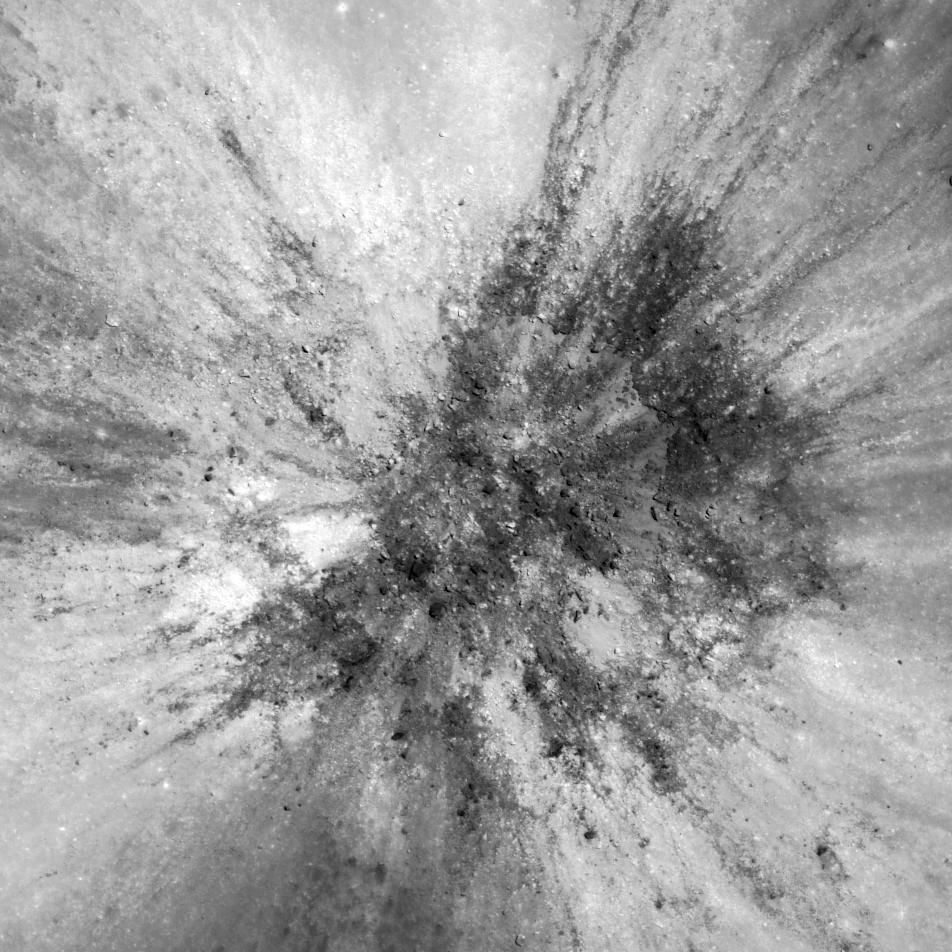
Astronaut John Watts Young, widely admired veteran of Gemini, Apollo, and Space Shuttle missions, died on 5 January 2018, at age 87. His NASA career spanned 42 years - from his selection as a member of NASA's second astronaut group in 1962 until his retirement in 2004 - and included six space missions between 1965 and 1983, four of which he commanded.
Two of Young's missions took him beyond low-Earth orbit to the Moon. For Apollo 10 (18-26 May 1969), which tested Apollo spacecraft in lunar orbit, Young was Command Module Pilot. For Apollo 16 (16-27 April 1972), the next-to-last U.S. lunar landing mission, Young was Commander. The vintage NASA video below reviews the Apollo 16 mission.
Apollo 16 was the only one of the six Apollo landing missions to explore a site entirely within the heavily cratered lunar highlands. Most of the light-colored areas visible on the full Moon are part of the highlands. The site was named for the Descartes Formation, which was in turn named for the nearby crater Descartes.
Geologists who examined photos taken by robotic Lunar Orbiter spacecraft believed that they saw signs of lunar volcanism at Descartes. Places that seemed to show that the Moon had been volcanically active were given a high priority when scientists and engineers gathered together to select Apollo landing sites.
All of the Apollo astronauts received some geologic training. After NASA selected astronauts for a lunar landing crew, their geologic training shifted into overdrive and was tailored to their landing site. Young performed geologic field work on the Moon alongside Lunar Module Pilot Charles Duke. Through field trips to places like the Mono volcanic craters in California, Young and Duke became enthusiastic rockhounds.
One of Young's favorite features at Descartes was South Ray crater, a 700-meter-wide young impact crater with "rays" of dark impact melt and bright ejecta. South Ray was located a little more than five kilometers south of Lunar Module Orion's landing spot (9.9734°S, 12.5011°E).
About two hours after piloting Orion to a perfect landing, Young described the view out its twin triangular windows. "South Ray is a doggone interesting crater," he told Mission Control. "I wish we could get to it. The boulders on the west rim of it are just thick and white as they can be." Young was interested in South Ray because he knew that the white boulders on its rim had originated deep beneath the surface, so they were likely to be among the oldest rocks exposed at the Descartes site.
Radar beamed toward the site from Earth had determined, however, that big boulders surrounded South Ray. Young and Duke drove a jeep-like Lunar Roving Vehicle (LRV) to get around their landing site, and planners were sure it would get stuck if they tried to reach the crater rim.
Young and Duke managed to sample South Ray from a distance by picking up rocks on the rays that extended northward from the crater. The rocks were particularly thick at a place called Survey Ridge.
They also climbed Stone Mountain, where they found more material blasted from South Ray. During their last geologic traverse, they explored and sampled the rim of 950-meter-wide North Ray crater (8.4912°S, 15.2848°E), located 4.4 kilometers north of Orion.
As it turned out, Descartes is not a volcanic site; it is, instead, made up mostly of ejecta from the giant impact that blasted out the Imbrium basin about 3.8 billion years ago. Many lunar scientists believe that, by the time the Imbrium ejecta reached Descartes, it probably flowed over the surface, laying down surface textures resembling volcanic flows. Such giant debris flows are not clearly understood; they remain a tantalizing lunar mystery to be solved by future explorers.
The rocks Young and Duke returned to Earth were breccias - rocks made up of other rocks fragmented and melted by impacts, then mixed up and stuck together. Some scientists in fact believed before Apollo 16 that the site was made up of breccias, but the volcanic interpretation had won out during landing site selection meetings. Finding breccias instead of the hoped-for volcanic rocks did not make Apollo 16 a failure; in fact, by providing "ground truth" data that forced a reinterpretation of the Descartes Formation, the mission enabled a better understanding of the Moon as a whole.
Lunar geologists got another surprise: the area around South Ray was not as rocky as expected, a fact since confirmed using LRO instruments. It was only slightly rockier than North Ray crater. Young and Duke might have reached the rim of South Ray and sampled the white rocks directly, just as Young desired.
Explore the full resolution overhead view of South Ray.
Related Featured Images
Astronaut's Eye View of the Apollo 16 Site Lunar Module Orion on approach
Orion, Up Close What does the Apollo 16 site look like today?
How Young is Young? The straight dope on North Ray crater
Making an Impact Recent research on lunar light plains (such as Descartes)
Lunar Light Plains: The Movie Even more recent research on lunar light plains
Project Gemini Comes to Life John Young's first spaceflight was the first piloted Gemini flight, Gemini III (1965), and Gemini X (1966) was his first command
Sources
Forever Young: A Life of Adventure in Air and Space, John W. Young with James R. Hansen, University Press of Florida, 2012.
Apollo 16 Voice Transcript Pertaining to the Geology of the Landing Site, N. G. Bailey and G. E. Ulrich, U. S. Geological Survey, Branch of Astrogeology, 1975.
Published by David Portree on 5 July 2018